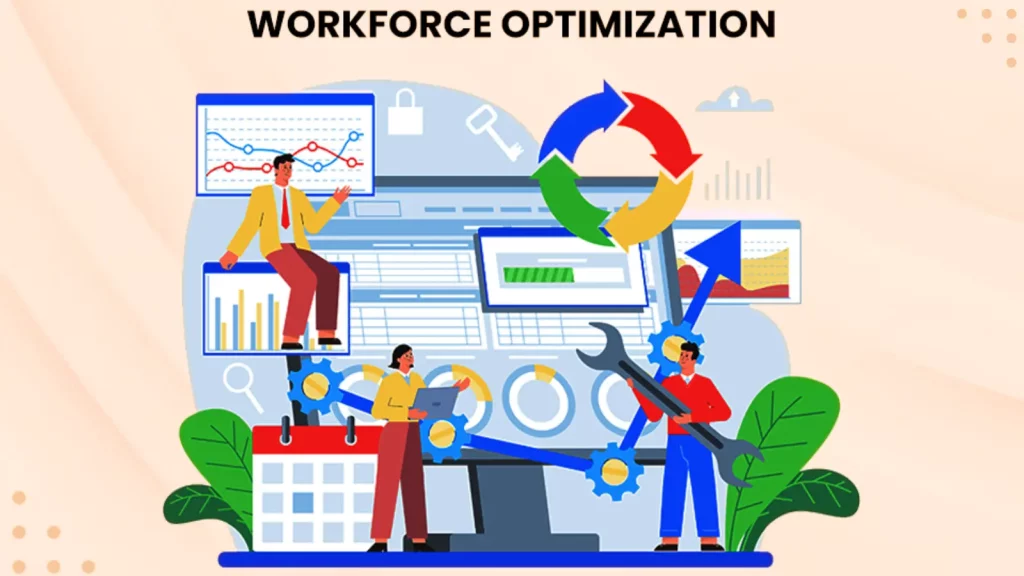The Role of Leadership in Workforce Optimization
The Role of Leadership in Workforce Optimization
Blog Article
The Future of Workforce Optimization: Cloud-Based Solutions
In today's rapidly adjusting work industry, mastering workforce planning in the gig economy is more essential than ever. The rise in freelance function and short-term agreements has converted how businesses run and handle their human resources. This short article may information you through the methods for workforce optimization about to succeed in the show economy.
Understanding the Job Economy Landscape
The job economy reflects a job market known by the prevalence of short-term contracts or freelance function instead of lasting jobs. That shift has generated equally options and problems for corporations seeking to keep agile and competitive.
Companies can faucet right into a adaptable talent share, letting them scale up or down quickly. However, managing a more fluid workforce involves powerful planning and new strategies to make sure performance and productivity. Knowing these makeup is the first step toward efficient workforce optimization.

Benefits of a Variable Workforce
Among the main advantages of the show economy is the flexibleness it offers. Businesses can adapt to market requirements without the long-term commitment of lasting hires. This mobility may lead to price savings and increased project management.
Furthermore, freelancers and show individuals frequently provide specific abilities and new perspectives to projects. Leveraging that talent may result in innovative options and increased support products for clients. Knowledge these advantages helps in appreciating the worth of a well-planned job workforce.
Issues in Handling Show Employees
Despite their benefits, managing a job workforce comes with unique challenges. Dilemmas such as for instance inconsistent perform quality, not enough loyalty, and different degrees of worker wedding may influence productivity.
To handle these problems, organizations should build apparent connection stations, set objectives, and provide necessary help to show workers. Utilizing these actions may mitigate possible dangers associated with a non-traditional workforce.
Strategic Workforce Preparing
Strategic workforce planning involves expecting future talent needs and planning to meet up these demands efficiently. In the context of the gig economy, this means determining which functions may be stuffed by gig workers and which involve permanent employees.
Businesses must create a healthy approach that leverages a mixture of show individuals and full-time staff. This technique assures that core procedures stay stable while enabling flexibility in project-based tasks.
Leveraging Engineering
Engineering plays a vital position in optimizing workforce planning. Programs such as Upwork, Fiverr, and Freelancer help the hiring of show personnel, while resources like Trello and Slack improve challenge management and communication.
Buying the right engineering answers can streamline the method of recruiting, onboarding, and managing show workers. This, subsequently, increases overall productivity and detailed efficiency.
Creating a Loyal Environment
Developing a helpful ecosystem for job employees is vital for long-term success. This involves providing access to necessary methods, providing education options, and fostering a feeling of community.
Firms that spend money on the well-being and development of their job workers are more prone to entice prime skill and keep high levels of engagement. This encouraging strategy can also improve the trustworthiness of the business within the gig economy.
Legal and Submission Concerns
Moving the legitimate and submission landscape is vital when handling show workers. Businesses must assure they abide by relevant job laws and regulations in order to avoid possible legitimate issues.
It is very important to keep knowledgeable about improvements in legislation which could impact show personnel and to apply procedures that defend both the company and its workforce. That hands-on approach may prevent expensive legitimate complications down the line.
Measuring Performance and Productivity
Calculating the performance and productivity of job personnel is essential for continuous improvement. Businesses must identify important efficiency indicators (KPIs) and frequently examine the share of gig workers to projects.
Standard feedback and performance reviews might help identify parts for development and understand high-performing individuals. That data-driven approach guarantees that workforce planning stays arranged with company objectives.
Enhancing Staff Wedding
Engagement is just a important element of workforce preparing in the show economy. Organizations should find methods to help keep job individuals determined and related for their work.
Giving incentives, realizing achievements, and marketing open interaction may enhance diamond levels. Involved workers are more prone to provide top quality function and contribute positively to the company's success.

Future Traits in the Job Economy
The show economy is constantly evolving, with new traits and systems shaping its future. Staying abreast of the developments is needed for efficient workforce planning.
Emerging trends such as for instance rural perform, AI-driven recruitment, and blockchain-based verification programs are collection to revolutionize the job economy. Companies that adjust to these changes will be greater placed to capitalize on new opportunities.
Realization
Optimizing workforce preparing in the job economy is a multifaceted method that will require strategic considering and a positive approach. By understanding the landscape, leveraging technology, and fostering a helpful environment, organizations can effortlessly control their show workforce and reap the advantages of that active work market.
For those interested in more increasing their workforce preparing methods, consider discovering extra sources and tools for sale in the market. By continually improving your method, you are able to ensure experienced accomplishment in the changing job economy.
Report this page